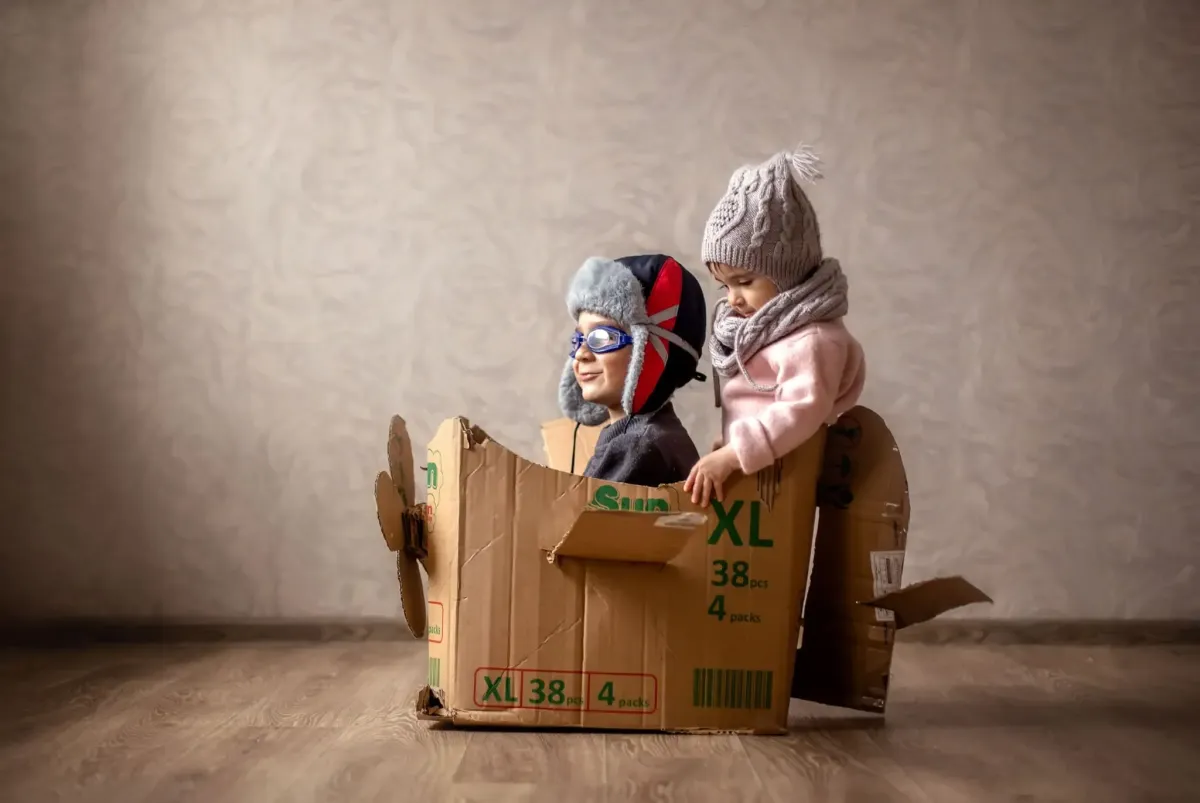
Helping Children Cope With Moving House
Helping Children Cope With Moving House
Whether it’s a move just down the road or one that crosses oceans, changing homes can be a big deal for little people.
To adults, it might be a fresh start or a long-overdue upgrade, but to a child, it can feel like their whole world is shifting. The familiar walls, neighbours, parks, routines, and even smells of a home offer comfort and security. So when it all changes, it’s completely normal for children to feel wobbly.
But with some simple strategies, clear communication, and a little imagination, you can help turn those nerves into excitement, and make moving feel like a new adventure for the whole family.
Understanding the Impact of a Move on Children
Children under 12 thrive on familiarity and routine. Moving house can unsettle them in all sorts of ways:
Loss of their room or space, leaving behind friends or relatives, starting a new school, worrying about their toys or pets, and fear of the unknown, just to name a few.
Even if they’re too young to express it clearly, they may show their stress through clinginess, sleep disruptions, regression (like bedwetting or tantrums), or tummy aches.
Talk It Through (Early and Often)
Once your move is confirmed, start having age-appropriate conversations.
Be honest and positive.
“We’re moving to a new house soon. It’s going to be a big change, and it’s okay to feel a little unsure. We’re going to figure it out together.”
Let them ask questions. Some children will want to know everything, others will only need the basics. Keep your tone upbeat, but don’t sugar-coat. It’s okay to acknowledge the sad parts.
If you're moving for a tough reason, like a separation or financial change, keep your explanation simple and reassuring:
“We won’t all be living in the same house anymore, but you are still safe and loved, and we’re going to make our new space special.”
Make it an Adventure
While some children may dread change, others can be drawn in by the sense of something new and exciting, especially if you involve them in the process.
Explore the new neighbourhood (if local) – Visit local parks, schools, and shops ahead of the move.
Draw or map out the new house – Let them plan how they’ll decorate or arrange their new room. Don’t be afraid to ask your realtor for a printout of the floor plan, or photos of the rooms.
Make a moving-day countdown – Create a fun calendar with stickers or small surprises.
Create a “Moving Day Survival Kit” – Include snacks, a favourite toy, colouring sheets, and photos of loved ones.
Letting children have some control, even over small things like picking a new duvet cover or choosing a snack for the car ride, helps them feel empowered.
Say Goodbye
Just like adults, children need closure.
Take time to:
Say goodbye to the house with a little ritual (like a goodbye walk-through or taking photos).
Write letters or draw pictures for friends or neighbours they’re leaving behind.
Make a memory book or box of their old home.
If leaving behind a garden or bedroom mural or handprint wall, you can even take a photo or frame a small piece (like wallpaper or a garden pebble) as a keepsake.
On the Day
Keep routines as normal as possible on moving day, and if they’re young, having a familiar adult look after them while you manage logistics can help. Make sure their essentials (toys, comfort items, PJs, toothbrush) are packed in a labelled “open first” box so they’re easy to find.
Let them help unpack something special, like their own box of teddies or books.
Books to Help Children with Moving
Stories are one of the best ways to help children explore big emotions and understand unfamiliar situations. Here are a few child-friendly books that can support the process:
“Big Ernie’s New Home: A Story for Young Children Who Are Moving” by Teresa Martin – A reassuring book featuring a cat who’s worried about leaving his old home.
“Alexander, Who’s Not (Do You Hear Me? I Mean It!) Going to Move” by Judith Viorst – A funny and relatable story for slightly older children who are resisting the move.
“The Berenstain Bears’ Moving Day” by Stan & Jan Berenstain – A classic story that makes change feel a little less scary.
“A House for Hermit Crab” by Eric Carle – A subtle but beautiful way of showing that change can bring growth and joy.
“Goodbye House” by Frank Asch – A simple and sweet story about saying goodbye and the mixed feelings that come with it.
Keep the Conversations Going
Once the move has happened, it’s common for children to experience a delayed reaction. Keep checking in.
Ask open questions like:
“What do you miss about our old home?”
“What do you like about this new place so far?”
“Is there anything you’re finding tricky?”
Make time for old routines like bedtime stories, favourite meals, or family movie nights to help them settle.
If You’re Moving Far Away…
A long-distance move can feel like a much bigger shift, especially if it includes a new country, language, or school.
Connect with others before the move (Facebook groups, virtual school tours), use maps and globes to help children understand where they’re going, and stay connected to loved ones through video calls, letters, or shared memory books.
Even if everything around them changes, your love and presence are the constants that help them feel secure.
Moving can be emotional, for children and adults alike. But it can also be the start of something wonderful: a new home, new friends, new memories.
By involving your child, validating their feelings, and making room for fun and ritual, you’re giving them the tools to build resilience and embrace change, not just in this move, but in life beyond it.